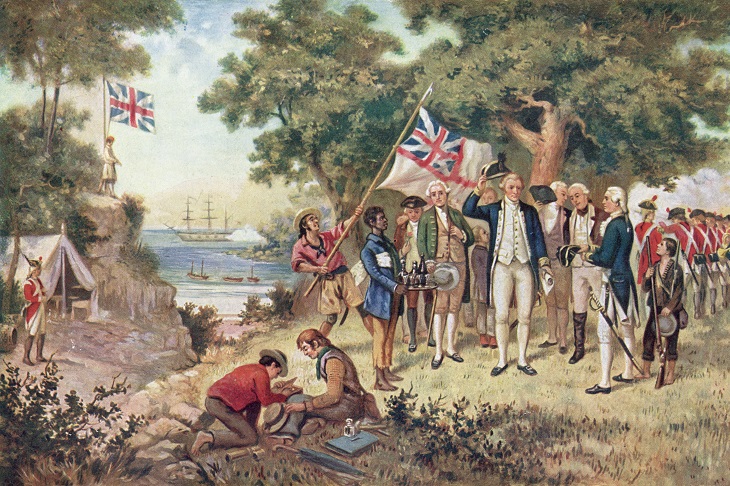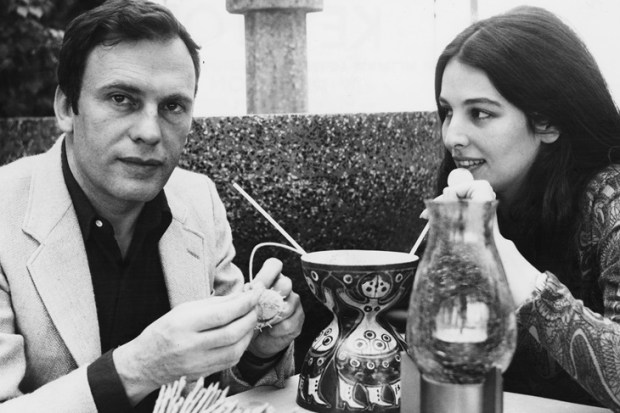Attempts are being made to cancel Samuel Griffith from his prominent role in Australian history, inevitably pushed by the university named after him. This is despite Griffith being a well-regarded former Premier of Queensland and Chief Justice who played a major part in writing the Australian Constitution. Another Englishman, Captain James Cook, is also under threat of cancellation by his eponymous university.
This, albeit minor insult, has seen the Australian Rugby Football Union change the name of the trophy awarded to the recently completed Australia versus England contest; originally called the Cook Cup.
Captain Cook was chosen because he was a figure who provided an obvious link between the two countries. It is now renamed the Ella-Mobbs Trophy. The Ella brothers were three Aboriginal players of repute in the 1980s while Edgar Mobbs was the England Captain for the first match, played in 1909, who was then killed in the first world war.
The change can only have virtue signalling implications as Captain Cook’s name has become inappropriately connected with invasion. Emma Hollingsworth, an Aboriginal artist who seems to have gotten her history a bit mixed up, described him as ‘representing forced removal, slavery, stolen land, and loss of culture, among other things’. One wonders what else poor Cook could be accused of? This is quite a list for someone who was not involved in any of these activities.
The 250th anniversary of his landfall in Australia was in 2020 and in the modern cancel culture world, Captain James Cook represents the worst of colonial excess and genocide. Nothing could be further from the truth, but statues of him have still been defaced or torn down.
The statue of Cook in Cairns, erected 50 years ago, has been bizarrely condemned because of its ‘Nazi’ salute. (No, it is not a Nazi salute, simply an awkward arm pointing out to sea.) Statues in Sydney and Melbourne were also defaced by protesters, as was another in Gisborne, New Zealand. Cook’s statue in Vancouver, Canada, was torn down and there were threats against another in Alaska. An armed guard was necessary for the statue in his place of upbringing, Whitby in the UK.
This is not the true picture of a man who was a brave seafarer, an explorer of consummate ability, and a renowned map-maker. He was a man whose discoveries changed our world; a man whose lack of racism contributed to his death at the hands of Native Hawaiians in 1779; a man whose abilities are recognised by over 100 statues and memorials throughout the world – most still standing as a testament to his abilities.
From humble beginnings, he joined the merchant navy at 17 years of age. At age 37, when England became involved in the European Seven Years’ War, he volunteered for the Royal Navy. Starting at the bottom as an able-seaman, he was first involved in combat a year later, with the sinking of a French warship. Despite his age, promotion was rapid and his skills in seamanship and map-making becoming apparent. Having passed his master’s examinations at the age of 39, Cook obtained his first command and charted parts of the Newfoundland coastline during the ongoing war with the French in Canada.
In 1768 at the age of 40, his first significant command was the HMS Endeavour, commissioned by the Admiralty to make the arduous journey to Tahiti to observe an astronomical event known as the Transit of Venus. Nine nations had combined to observe this rare phenomenon. It was a highly valued event as it enabled the calculation of the Earth’s distance from the sun and accurate longitude measurement for navigation. Despite spending nearly a year in transit to view the spectacle, weather conditions were far from ideal for the observations, but his calculations were accurate to within 1 per cent.
Cook’s other mission was to search for the suspected, but unconfirmed, continent of Terra Australis. Whilst exploring this unknown part of the Pacific, he discovered and mapped the complete coastline of New Zealand. He also had violent encounters with the Maoris, with nine lives lost which has become a source of ongoing apology demands. He then sailed west to make the first European sighting of Australia’s east coast in April 1770. Also on board was botanist Joseph Banks, who collected many plant specimens and whose name is attached to several Australian plants, as well as Botanist’s Bay, subsequently renamed Botany Bay.
So-called invasion commenced at Botany Bay. After an attempt at peaceful trade went wrong, two Aboriginal men opposed the landing crew by throwing spears and stones with lethal intent. Cook fired three times with deliberately non-legal loads, intending to stun the attackers so that the crew could safely retreat. In the exchange, one Aboriginal man sustained a minor leg wound; there were no other encounters.
With his crew surviving shipwreck on the Barrier Reef, malnutrition, and malaria, Cook completed his eventual return to UK after three years at sea in 1771.
A subsequent three-year voyage on HMS Resolution, from 1772 -75 saw Cook circumnavigate the globe and explore far south to the Antarctic in his continued search for Terra Australis. After these extraordinary journeys, he was aged 47, given voluntary retirement from the Navy, and made a fellow of The Royal Society (the country’s premier scientific institute).
Cook, however, could not resist the call of the sea and made a third voyage, starting in 1776. He was tasked with exploring the North-West passage and the mythical route around the top of North America. He traded with the North American Indians without incident and mapped the West Coast of America as far north as Alaska.
He returned to Hawaii in 1779. Initially, his crew were well received, but he outstayed his welcome because of a delay with his ship’s repair. Relations turned sour when thefts resulting in floggings and an attempt to capture the local leader as a hostage led to more violence. Cook and several other crew members were killed in the ensuing melee at which point Cook’s body was baked but apparently not eaten. The HMS Resolution eventually reached the UK in 1780.
During his life, his accurate map-making charts aided many on the high seas, while the plant specimens collected from the voyage were of immense value to botanists.
What Cook specifically did not do was invade or oppress.
His introduction of lemons and fresh vegetables to the crew diet is believed to have been a world-first and saved his men from the vitamin C deficient torment of scurvy (a common condition on long voyages). Cook’s name lives on in towns, geographic features, hospitals, and universities across the world, including in Australia and New Zealand. His ships’ names, Endeavour and Discovery, have reached into the cosmos with planetary exploration where they were given to Mars rovers and NASA shuttles.
Despite the views of activists, the treatment of Cook’s crew and those he met was, unless under threat, exemplary. He made great contributions to the ‘Age of Enlightenment’ and gave his life in the process. He should continue to demand our respect.
PS I am no longer a keen rugby supporter!
Got something to add? Join the discussion and comment below.
Get 10 issues for just $10
Subscribe to The Spectator Australia today for the next 10 magazine issues, plus full online access, for just $10.


























Comments
Don't miss out
Join the conversation with other Spectator Australia readers. Subscribe to leave a comment.
SUBSCRIBEAlready a subscriber? Log in